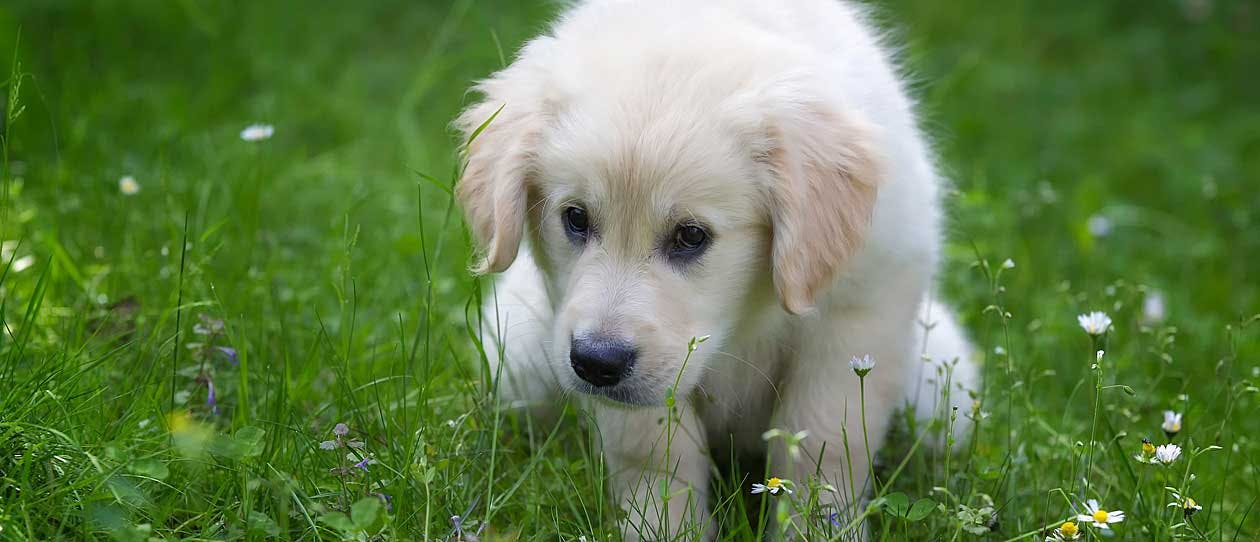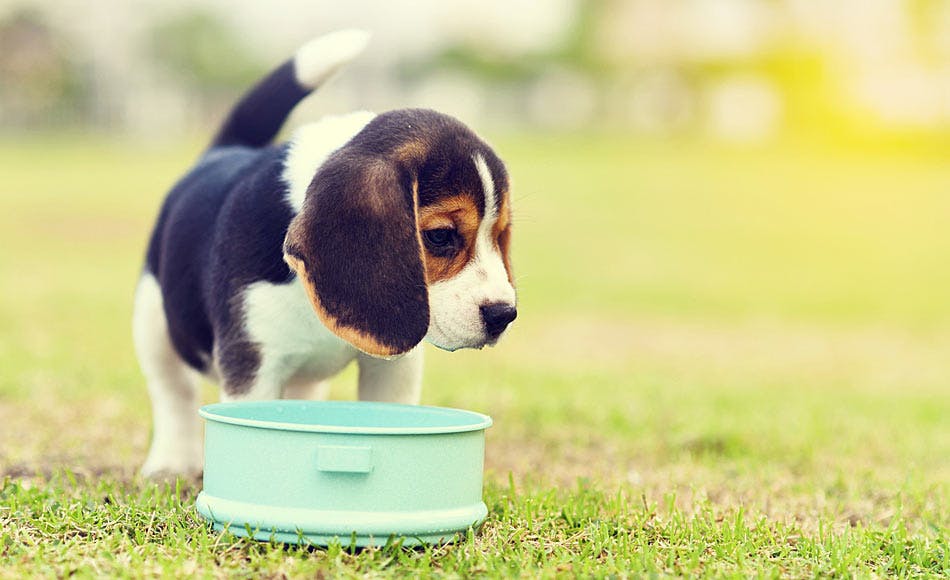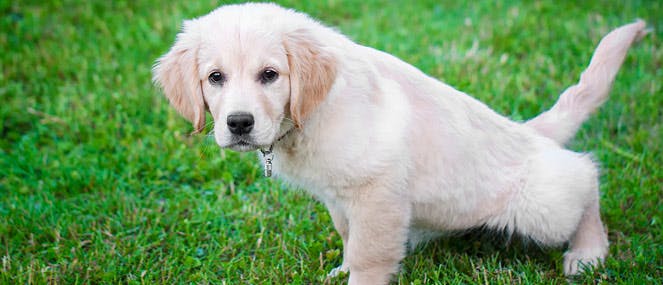
- A Guide To Perfect Your Pet's Health/
- Manage Your Dog's Digestive Health/
- What your dog's poop tells you


From slimy yellow spatter to stuff that won’t come out, poop horror stories are common among dog owners.
As is the case for humans, dog stools are not created equal, and variations in poop can tell owners a lot about the health and well-being of their furry friend. All being well, your pooch’s poo should resemble Play Doh – which is to say, it’s formed and soft-ish, according to vet Dr Trish Santos-Smith. “You should easily be able to grab it into a doggy poop bag.”
Healthy gut function also produces stools that are a consistent chocolate-brown colour, and are regular in production – no more than one or two a day, Dr Santos-Smith says. “This rule should not vary much between breeds. Some dogs have more flatulence than others – and no-one is really sure why – but healthy poo should look the same across the board.”
What does unhealthy dog poop look like?
Dog poop is too hard
Issue:While older dogs often have harder poops, this problem can occur in pooches of all ages. “When your dog is straining to defecate, as if they are constipated, and they can’t poop or it comes out hard or sandy, it’s either a sign that they’re dehydrated, or have consumed a lot of bone, which they can’t digest,” says Dr Santos-Smith. This could also indicate that you’re overfeeding your pet, or feeding it too much dry kibble
Treatment:
In many cases, changing your dog’s diet, ensuring it’s getting sufficient exercise and maintaining adequate hydration levels can assist with the movement of food through the gut. In severe cases, the build-up of faeces in the colon may act as a ‘cork’ in your dog’s intestine, meaning nothing can pass through, and causing severe pain. Your vet may need to look at treatments to flush the build-up out and relieve constipation.
Dog poop is too soft
Issue:If your dog’s poop comes out as fast as its pee, you know something is wrong. Doggy diarrhoea is “one of the most common concerns a vet will see,” says Dr Santos-Smith. There are all manner of causes, from dietary indiscretions and parasites to food allergies, stress and gut disease.
Treatment:
Often, home remedies like changing your dog over to a bland diet (like rice, pasta and white meat) or incorporating natural probiotics into their diet can have an immediate impact on the looseness of stools. But if the issue is recurring, prolonged or gets worse, then take your pooch off to see a vet to diagnose the condition.
Change in colour of dog poop
Your dog’s poop should range in colour from tan to milk-chocolate, depending on diet and hydration levels. There are probably issues if stool colour changes to:- Dark brown or black: “If your dog’s poop looks like dark chocolate, it’s a sign that there maybe of blood in it, indicating something’s wrong in the intestinal tract,” says Dr Santos-Smith. Your vet may need to do blood work and stool tests to determine the cause of the bleed.
- Grey or yellow: This indicates that food is passing through your dog’s intestine too fast, which may point to an issue with your pet’s liver, bowel, gall bladder or pancreas. Periodic colour changes can be normal, and may be treated simply by swapping your pet over to a bland diet. But if the yellow or grey poop sticks around, it’s time to see your vet.
- Green: Has your pooch eaten a lot of grass recently? This could be the reason for the colour change in its stools – usually there’s no need for concern, as dogs often munch on grass to add fibre to their diet or to induce vomiting if their tummy is upset. But it could also be a sign that your pooch has ingested rat bait. If you don’t think it’s the former, get to your vet ASAP.
- White spots: Does it look like your pooch has been eating a lot of rice? White dots in dog poop are generally not a result of diet, but actually an indication they have worms. The good news is that there are dozens of de-worming treatments available.
Bright red streaks of blood in dog poo
Issue:If you find a one-off spot of blood in your dog’s poop, you probably don’t have reason for concern. But if the blood is a recurring feature and appears streaky in the stool, your pooch may have an inflamed intestine.
Treatment:
Check your dog’s bum to see if there’s a cut in the anus that might be the source of the blood – if so, it just needs time to heal. Consistent bleeding and large amounts of blood may indicate your pooch has a more serious viral or bacterial infection in the intestine that requires a vet’s attention.
Mucus in dog poop
Issue:Ever seen your dog’s poop look like it has sticky jam on it? This coating of mucus over your pet’s stool could be a sign of colitis – an inflammation of the colon, resulting in reduced water absorption and impaired food digestion. The mucus may come hand-in-hand with diarrhoea and blood.
Treatment:
All manner of things might lead to mucus in your dog’s stools, from infections to food allergies and bowel disease. If your pet’s not in pain, try swapping it over to a bland, hypoallergenic diet. If symptoms persist, it’s time to see your vet. Generally, prescribed medication will quickly resolve inflammation or infection in your dog’s intestine, but if your dog is taking antibiotics, be sure to pair the pills with a gut-friendly natural probiotic.
Greasy/fatty dog poop
Issue:If you can visibly see grease and fat in your dog’s poop, it’s a sign your pooch may have issues in its pancreas, gall bladder or intestines, or an overall problem with fat digestion and absorption. This is also another symptom of colitis (see above).
Treatment:
See your vet as an underlying problem with the liver or pancreas will not just go away. Your vet might recommend you cut fats out of your dog’s diet, and stick to a bland diet of rice or pasta, paired with a white meat such as chicken. They might also suggest you add in enzyme or natural probiotic powders to improve healthy gut function.
When is it an emergency?
“As with any health issue for your pet, the best thing to do is monitor the condition and see if they are in discomfort,” says Dr Santos-Smith. If they are vomiting, shaking or in visible pain, or if symptoms are prolonged and not improving despite home remedies, then always seek advice from your vet. PAW DigestiCare™A multi-strain, multi-species probiotic and wholefood powder for the maintenance of everyday digestive health of pets.




